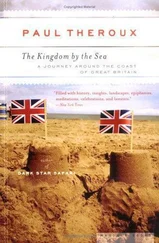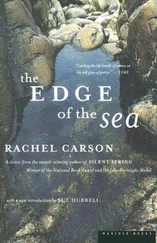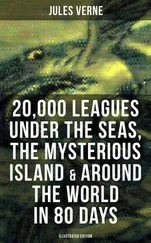Latimeria was identified as a coelacanth, or one of an incredibly ancient group of fishes that first appeared in the seas some 300 million years ago. Rocks representing the next 200 million and more years of earth history yielded fossil coelacanths; then, in the Cretaceous, the record of these fishes off South Africa was at first considered a mysterious and extraordinary incident, not likely to be repeated. An ichthyologist in South Africa, Professor J. L. B. Smith, did not share this view. Believing there must be other coelacanths in the sea, he began a patient search that went on 14 years before it was successful. Then, in December 1952, a second fish of this group was captured near the island of Anjouan, off the north-western tip of Madagascar. The search was then taken up by Professor J. Millot, Director of the Research Institute in Madagascar. By 1958 Professor Millot had obtained ten more specimens, consisting of seven males and three females.
A plausible explanation of the sixty-million-year gap in the occurrence of fossil coelacanths has been put forward by Dr. Bobb Schaeffer of the American Museum of Natural History. Dr. Schaeffer points out that the earliest coelacanths, from pre-Jurassic time, seem to have inhabited a variety of environments, including freshwater swamps as well as seas. From the Jurassic to the present time, on the other hand, they seem to have been exclusively marine. At the close of the Cretaceous, the great withdrawal of the sea from the continental areas it had overflowed may have confined the coelacanths to the permanent ocean basins. There, in the bottom sediments, their fossils would be so inaccessible that the chance of their discovery would be exceedingly remote.
The range of echo-sounding instruments has now been so greatly extended that under ideal conditions the most powerful of them are capable of sounding the maximum depths of the sea. Factors such as the nature of the underlying bottom and conditions in the intervening water layers influence the effectiveness with which the sounding devices operate under actual conditions at sea. Nevertheless, the potential range necessary for charting all parts of the sea is now at the command of oceanographers.
In the ten years that have elapsed since this account of the canyons was written much more has been learned about them, but it may still be said that there is no general agreement about their origin. Many of the resources of the modern oceanographer have been brought to bear on the problem. Divers have engaged in direct exploration of the shallow heads of some of the California canyons, collecting samples of their walls and photographing them. Other canyons have been studied by oceanographers using deep-sea corers or dredges to obtain samples of rocks and sediments. Precision depth recorders have given much new information about their shapes. As a result of these studies it is now known that there are at least five types of canyons, so different in their characteristics that almost certainly they have different origins. No single theory may be expected to explain all of them. Professor Francis S. Shepard, the marine geologist who originally put forward the theory that the canyons had been cut by rivers and later submerged, now feels this explanation is adequate for some canyons but not for others. For example, some marine valleys, trough-shaped and straight-walled and occurring in areas where the earth’s crust is in a state of unrest, probably represent a fault or fracture of the rocky floor. The theory that some of the canyons have been cut by vast sediment flows called turbidity currents has gained support as a result of new concepts of dynamic activity on the floor of the sea. Further detailed study of all types of these extraordinarily fascinating features of the sea floor should not only clarify their own history but add greatly to our understanding of the history of the earth.
Somewhat greater depths have more recently been recorded in the Mariana Trench off the island of Guam, the trench into which the bathyscaphe Trieste made its record-breaking descent to the bottom. In this trench the Challenger in 1951 recorded a depth of 10,863 meters or about 6.7 miles. Since the exact location of the Challenger echo sounding was given, this depth is capable of verification and so is regarded as the maximum depth of which we have authentic record. In 1958, however, Russian scientists aboard the Vitiaz reported a finding of slightly greater depths (11,034 meters or 6.8 miles) also in the Mariana Trench, but at an unspecified location.
From The Changing World of the Ice Age, 1934 edition, Yale University Press, p. 116.
The supposition that the Atlantic Ridge may extend across the Arctic basin has been confirmed in exciting new developments in marine geology. Indeed, it is now suggested by some geologists that the whole mid-Atlantic ridge is part of a continuous range of mountains that runs for 40,000 miles across the bottom of the Atlantic, the Arctic, the Pacific, and the Indian Oceans (see Preface).
As for the exploration of the Arctic basin itself—the charting of details so long unknown and merely guessed at—the revolutionary development that made it possible to substitute fact for theory was the use of American nuclear-powered submarines to pass beneath the ice cover and directly explore the depths of this ocean. In 1957 the Nautilus (bearing the same name as Wilkin’s conventional submarine) first penetrated beneath Arctic ice in a preliminary exploration designed to discover whether it was feasible to explore these regions by submarines. The Nautilus remained submerged for 74 hours and covered a distance of almost 1000 miles. A vast amount of data was collected, including depth soundings and measurements of the thickness of the overlying ice. Then in 1958 the Nautilus crossed the entire Arctic basin from Point Barrow in Alaska to the North Pole and thence to the Atlantic. In the course of this historic voyage it made the first continuously recorded echo-sounder profile across the center of the Arctic basin. Other nuclear submarines have subsequently contributed to our knowledge of the Arctic. It is now clear, from the work of the nuclear submarines and from other, more conventional explorations, that the bottom topography of the Arctic Ocean is for the most part that of a normal oceanic basin, with flat abyssal plains, scattered sea mounts, and rugged mountains. The greatest depth so far discovered is somewhat more than three miles. The shelf break (from which a steeper descent begins) falls at the unusually shallow depth of 35 fathoms off Alaska. From samplings by coring tubes and dredges and from deep-sea photography it was discovered during the International Geophysical Year that the bottom is widely covered with rocks, pebbles, and shells, the latter chiefly of shallow-water forms. The present ice cover seems to be carrying little or no material such as rock fragments and sand, so the material now found in bottom samples must have come from ice rafted in from surrounding continents during some past geologic time, when the Arctic was relatively open water.
Russian scientists, who have done rather extensive work in marine biology, obtained interesting data which seem to disprove Nansen’s earlier belief that the waters of the central Arctic are extremely poor in both plant and animal life. Data collected from the drifting station “North Pole” indicate that both plant and animal plankton in great variety exist in the region of the Pole. Little-studied organisms develop on the surface of the ice; these contain much fat and tint the ice shades of yellow and red. Diatoms are not found in the surface of the ice but develop (along with other plankton) in the lakes that form on the surface of the ice as it melts. By absorbing a great amount of energy from the sun, the abundant diatom colonies contribute to further melting of the ice cover. The wealth of plankton during the Arctic summer attracts numbers of birds and various mammals.
Читать дальше












